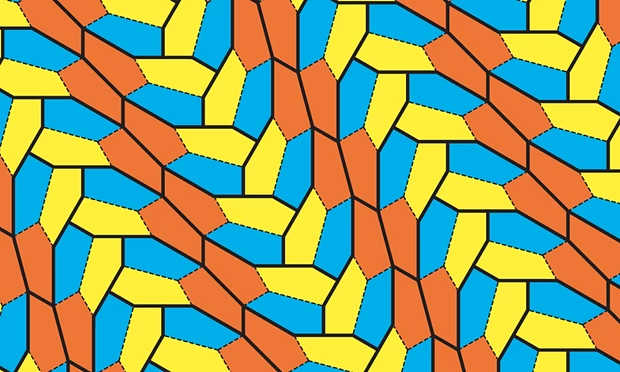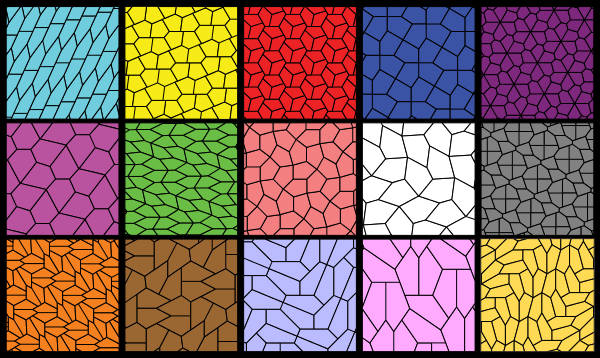| Computer Finds New Pentagonal Tiling - With Some Human Help |
| Written by Mike James | |||
| Saturday, 15 August 2015 | |||
|
A new pentagonal tiling of the plane has just been discovered. It is the first in 30 years and we still don't know if there are any more. A shape that can cover the plane leaving no gaps is said to tile the plane - literally; you could use it to tile your bathroom floor, even if it was infinite in area. Some tilings of the plane are fairly boring - the square, the triangle even the hexagon. They have so much symmetry that they just look obvious and there is nothing much more to say. But the pentagon is something else. The five fold symmetry of a regular pentagon is slightly irritating. You can't tile the plane with a regular pentagon because its internal angle is 108 degrees which is not a divisor of 360 degrees. You can also prove that a pentagon cannot be part of any tiling that involves any mix of regular pentagons. You can make pentagons fit together if you move away from regular pentagons - that is, use convex pentagons with different lengths of sides and angles. As of the start of this year (2015) 14 such pentagonal tilings were known. The first five were found in 1918, three more in 1968 and it was claimed there were no more. A ninth was found in 1975 and then amateur mathematician, Marjorie Rice, found four more in 1976 and 1977. The set seemed complete with a 14th convex pentagon tiling found in 1985 and things went quiet for 30 years ... until this year. Casey Mann, Jennifer McLoud, and David Von Derau have just discovered a 15th tiling using a computer program. The result is so new that the paper announcing it hasn't been published yet. "A research team in the University of Washington Bothell School of Science, Technology, Engineering and Mathematics has become a part of math history. Using a computer program written by an undergraduate student on the team, they discovered the 15th kind of pentagon that can tile a plane." The pentagon itself doesn't look that impressive:
Casey-Mann
But the pattern it makes when used to tile the plane is another matter:
Casey-Mann Although the details aren't clear it seems that a program was used to search through a large but finite number of possibilities. It seems even this sort of geometry, so accessible to amateur mathematicians, has also gone "computer aided". "Mann and McLoud-Mann specialize in tiling and knot theory and have been working on finding the new pentagon tile since their arrival at UW Bothell two years ago. Von Derau arrived at about the same time and brought to his classes a wealth of experience in software programming or, as he puts it, “getting the computer to do what you want.” Von Derau joined the team six months into the research process and was handed an algorithm developed by the co-directors. He automated the process and the rest is literally history, but it may not stop there. The team will look for additional tiles by running a tweaked version of Von Derau’s computer program on Hyak, the high performance computers on the UW Seattle campus." The pentagon is the last of the n-sided tiling shapes to be holding out on us. You can tile the plane with any triangle or quadrilateral. There are known to be just three types of convex hexagon that tile the plane and that's it. No other n-sided convex objects tile the plane, but we still don't know how many possibilities there are for the pentagon - is the count closed at the fifteen shown below?
"PentagonTilings15" by EdPeggJr
The beauty of the problem is that it is easy to understand, but very difficult to actually solve. You can get started with just a piece of paper and a pencil, or with a program and a computer.
More InformationRelated ArticlesJigsaw Puzzles and The MacMahon Squares Unshuffling A Square Is NP-Complete Kenneth Appel Remembered For Four Color Theorem Proof
To be informed about new articles on I Programmer, install the I Programmer Toolbar, subscribe to the RSS feed, follow us on, Twitter, Facebook, Google+ or Linkedin, or sign up for our weekly newsletter.
Comments
or email your comment to: comments@i-programmer.info
|
|||
| Last Updated ( Sunday, 16 August 2015 ) |





